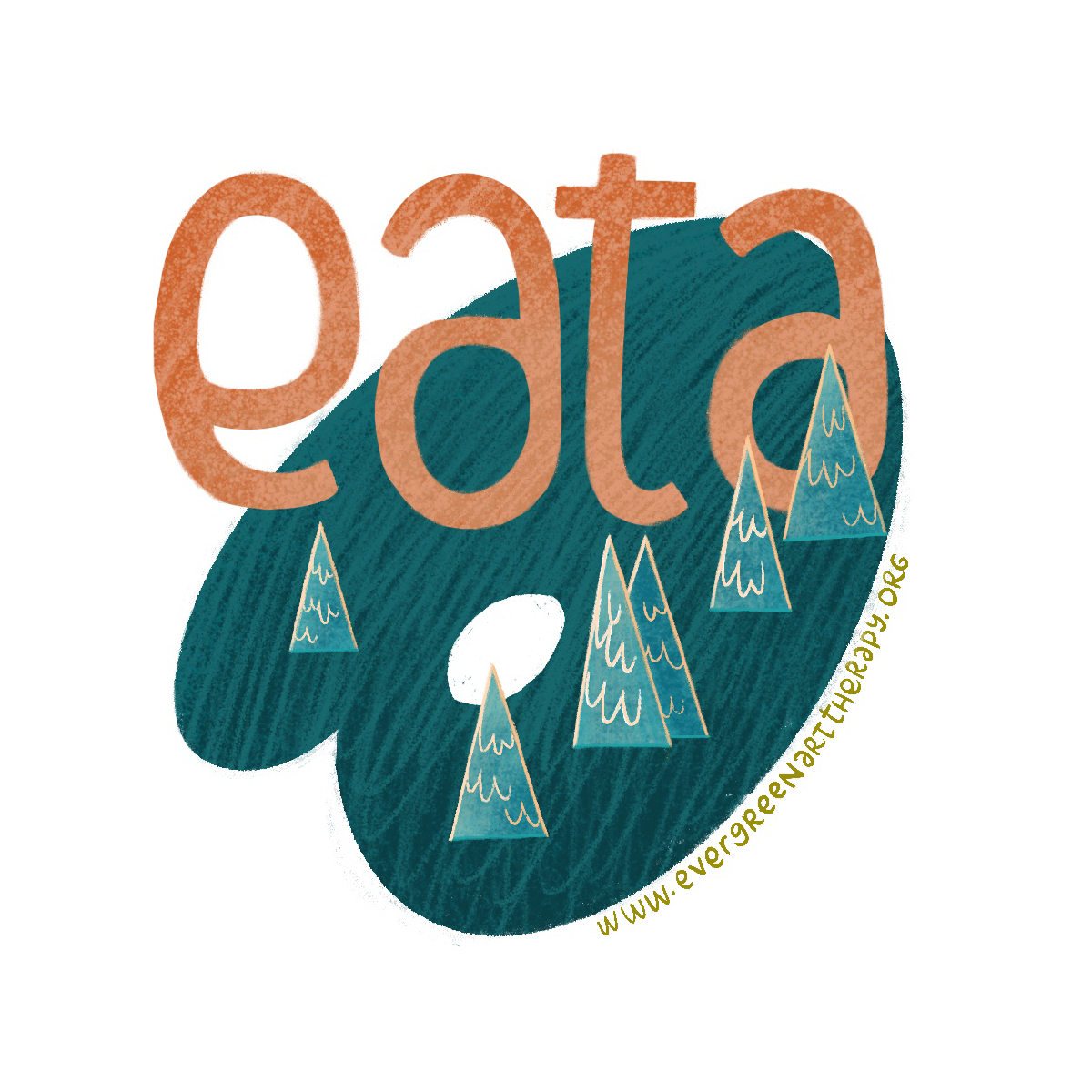Commonly Asked Questions & Reading Recommendations
FAQ’s
-
Yes. We are a state chapter of the American Art Therapy Association (AATA) that is a registered 501(c)3. We are not a registered non-profit specifically in Washington State. For financial information please review: https://arttherapy.org/financial-information/
-
Art therapists work in a variety of settings. They can work as primary or adjunctive therapists. Some are private practice counselors, some work in government agencies, school systems, community art studios, and some work in less traditional settings such as museums and for humanitarian aid excursions.
-
Art therapists use a variety of media, in fact the sky is the limit when it comes to art therapy artmaking. These therapists are trained to help people use the materials as part of the process. They know how to use every material as a way to enhance the therapeutic benefit, according to individual needs.
The final product of art therapy artmaking is always viewed in a non-judgmental way. Clients will also have the benefit of visual time-marking and a process of their therapy in their artwork.
-
People of all abilities and ages can benefit from art therapy. Clients do not require special art training or talent. The creative process can provide individuals with an alternative way to communicate feelings that may be too difficult to be put into words or that words along cannot describe.Item description
-
professional standards for training involve master's degree level work in art therapy or another related field with 24 semester hours of additional art therapy training.
Master’s level art therapy training usually lasts two to three years and includes most of the curriculum a counseling psychology program would cover, as well as a curriculum concerning the utilization of art materials in the therapeutic process. Students typically fulfill one or two practicum internships and have supervision with an art therapist, as well as with other supervisors in social services, educational, and mental health settings. Ethically art therapists go by the same standards, which any counseling professional would adhere to.
-
There are a variety of master-level training programs in art therapy. In the United States there are approximately thirty masters level programs and 5 Doctoral. The American Art Therapy Association (AATA) sets educational and credentialing standards for art therapy training programs and practicing professionals. Programs that are accredited have been approved by AATA. In addition, many of these programs offer a Post-Master's Certification in Art Therapy after completing an M.A. in a related field.
There are two training programs in the Pacific Northwest:
Antioch University Seattle
There you may either be trained in Mental Health Counseling or Couples and Family Therapy
2400 3rd Ave #200, Seattle, WA 98121Lewis & Clark Graduate School
615 S. Palatine Hill Road
Portland, Oregon 97219 -
Besides searching on the internet and reading books or articles, the best starting point is to talk with an art therapist and explore what they like about their work, how they became an art therapist, and starting to ask yourself what the appeal is for you. This website has a page to find art therapists in Washington state.
Suggested Art Therapy Readings:
Easy to read:
1. Malchiodi, C.A. (2006). Art therapy sourcebook. New York: Guildford
2. Barber, V (2002) Explore Yourself Through Art: Creative Projects to Help You Achieve Personal Insight & Growth & Promote Problem Solving. Plume.
3. Partridge, E. (2020) Getting on in the creative art therapies. Jessica Kingsley Publications.
4. Junge, M. B., & Newall, K. (2015). Becoming an art therapist: Enabling growth, change, and action for emerging students in the field. Charles C Thomas Publisher.
Advanced readings:
3. Allen, P. (2005). Art Is a Spiritual Path. Boston: Shambhala.
4. Allen, P. (1995) Art Is a Way of Knowing. Boston: Shambhala.
5. Hagood, M. (2000). Use of art in counseling child and adult survivors of sexual abuse. Philadelphia: Jessica Kingsley Publications.
6. Linesch, D. (1990). Adolescent art therapy. Taylor & Francis.
7. Shirley, S. (2001). Group process made visible: Group art therapy. Philadelphia: Brunner-Routledge.
8. Wadeson, H. (2000). Art therapy practice: Innovative approaches with diverse populations. New York: John Wiley.
More Resources
American Art Therapy Association
The American Art Therapy Association, Inc. (AATA) is a national association dedicated to the belief that the creative process involved in the making of art is healing and life enhancing. Founded in 1969 AATA is a not-for-profit organization of approximately 4,750 professionals and students that has established standards for art therapy education, ethics, and practice. AATA committees actively work on professional and educational development, national conferences, regional symposia, publications, governmental affairs, public awareness, research, and other activities that enhance the practice of art therapy.
Art Therapy Credentials Board
The Art Therapy Credentials Board, Inc. (ATCB), an independent organization, grants postgraduate registration (ATR) after reviewing documentation of completion of graduate education and postgraduate supervised experience. The Registered Art Therapist who successfully completes the written examination administered by the ATCB is qualified as Board Certified (ATR-BC), a credential requiring maintenance through continuing education credits.
Good Therapy
"Finding therapists that provide collaborative and non-pathologizing psycho-therapy and counseling."
Counseling Seattle
"The starting point for consumers of mental health and chemical dependency counseling services and for the professionals in these fields." Run by Floyd Else.
The Arts We Need
A not-for-profit organization 501(c)(3), dedicated to providing Creative Arts Therapy and related arts programs to people with special needs and assisting programs that are either attempting to start an arts program or improve upon an existing program.
Arts in Therapy Network
An online community for Creative Arts Therapists (CAT) and those who are interested in the Healing Arts.
